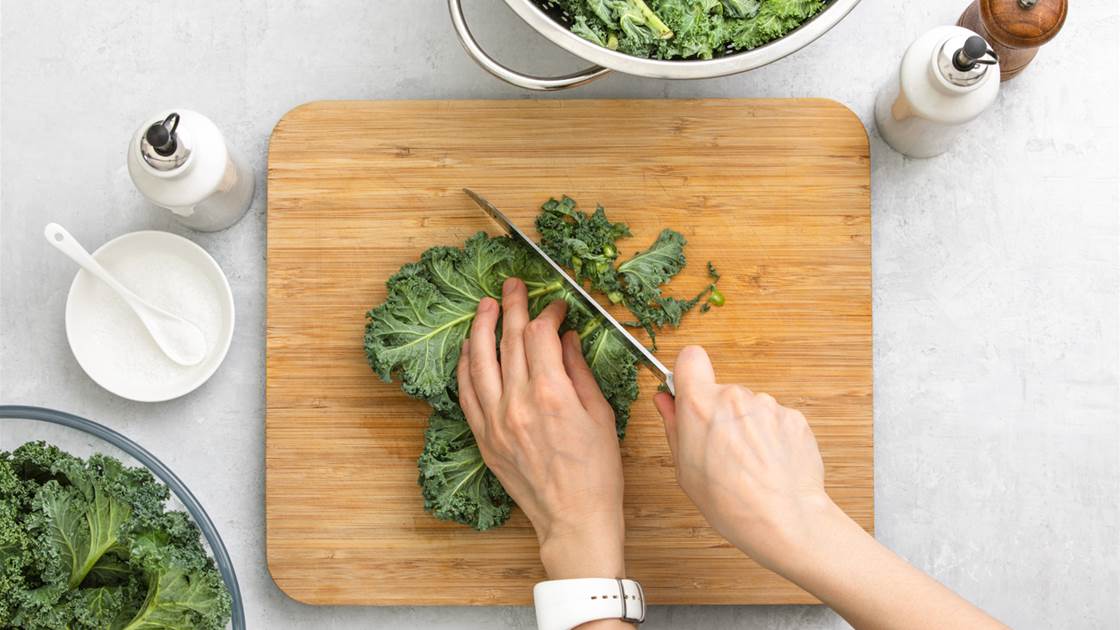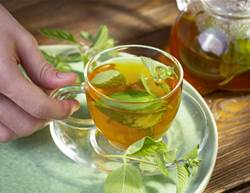Gone are the days when leafy greens were simply spinach and Romaine lettuce. There are other interesting greens that allow consumers to mix up the flavours and textures of their go-to salad, stir fry or stew. Greens like peppery arugula, crunchy cabbage, and hearty kale are perfect for getting out of your salad rut.
And kale in particular has been given a health halo for packing in tons of nutrients into every dish. Kale has grown in popularity because it has a lot more texture and holds up better in salads, soups and other dishes compared to other leafy greens, explains Lee Jones, farmer and author of The Chef’s Garden. But, is kale even that healthy? Experts explain the health benefits of kale and how to use it.
Kale benefits
Kale is popping up in your favourite salads, pasta dishes, and soups for good reason. It’s packed with nutritional benefits that help bulk up your diet with all the good stuff.
“Adding any dark leafy green is beneficial to add to your diet. Dark leafy greens supply a significant amount of fibre, folate, and B vitamins that promote heart health,” says dietitian and chef, Julie Harrington. “Kale specifically is a very nutrient-dense food and very low in calories.”
She adds that eating kale can quickly help meet your daily requirements for certain nutrients. But its claim to fame is the incredible amount of vitamin C in the leaves. Harrington says a cup of kale has more vitamin C than an orange and can help keep your immune system strong.
“It is so high in nutrition and it has a lot of vitamins,” adds Debra Moser, a food and marketing expert. “I think that’s why it became popular. It’s great for your body, and I love kale both raw and cooked.”
Some research points to eating raw kale instead of cooking it for the most nutritional boost. Cooking kale may lower its antioxidant content and vitamin C content, but that isn’t to say cooked kale isn’t healthy for you too. Another study found steamed kale can lower cholesterol and decrease the risk for cardiovascular disease and cancer.
“Kale for me is the king of the brassicas (the group of vegetables that includes cabbage, broccoli, and Brussels sprouts),” says Juliet Glass, a communications expert that works with producer-only farmers. “It loves cold weather, it’s nutrient-dense, and it’s fibre-rich.”
Types of kale
There are a few different varieties of kale, all with a slightly different texture and taste. So, it's worth being a bit adventurous and trying them when you find them. You'll soon find your favourite.
- Curly kale. This is likely the kale you’re most familiar with or have seen as a garnish at a buffet table or in your fruit basket, Glass says. The leaves are bright green, curl in, and are a little tough to chew.
- Tuscan kale. Also known as dinosaur or Lacinato kale, these slender, dark green leaves have bumpy or bubble-like texture, Glass says. You can enjoy them raw or cooked because the leaves are a little more tender and they have a slightly sweeter flavour, says Lawrence Tse, a farm manager. He adds that this variety doesn’t hold up as well in the cold compared to others, so it may disappear as winter progresses.
- Red Russian kale. Glass explains this variety has some shades of green, blue, and purple. The leaves are slightly tougher and more bitter, so this works well wilted just slightly in cooked dishes, Tse says.
- Baby kale. This kale isn’t so much of its own variety as it is just a type of marketing for kale you may see at the store. In fact, baby kale is typically just Red Russian kale harvested earlier so the leaves are smaller and more tender, Glass says.
How to prepare kale
There are tons of ways to enjoy the leafy greens both raw and cooked. If you think you’re not a kale lover, try different varieties in different types of dishes and you’re sure to find your perfect bite. “Kale is one of the most versatile of the greens,” Moser says. “It’s one of my favourites. I adore it.”
If you find raw kale to be a little too chewy or tough, Glass suggests massaging the leaves for 30 seconds with a little salt and oil or the dressing you plan to use. Alternatively, you can dress the leaves in advance and let them sit for a half-hour before serving. The acids in the dressing will help soften the leaves, she says. Try these fun ways to incorporate kale into your diet.
- Raw in a salad. In recent years kale has found its place chopped up raw in salads, which is a delicious way to enjoy, Jones says. He suggests using the inner leaves, which are more tender and easily chewed when raw. Salads are also a great place to toss in baby kale leaves. Try this Kale, Avocado, and Citrus Salad or Parmesan Kale Salad for a quick, healthy lunch.
- Baked. Toss torn kale leaves with some olive oil, salt, pepper, and your favourite seasoning and bake until it has a chip-like crisp. These “Cheesy” Kale Chips are a great place to start. If you don’t love the crispy texture, you can still add kale to your favourite baked veggie dish, like this Roasted Chicken and Potatoes With Kale.
- Blend them up. Moser loves replacing her usual spinach or softer green for heartier kale in morning smoothies for a thicker texture. In a savoury swap, Glass likes to blend kale into pesto for a little extra heft, like this Kale Pesto Pasta.
- Sauté into your favourite dish. Perfect for any fried rice, curry, or pasta dish, a handful of torn kale can add a ton of nutrition and heft to your usual one-pot dinner. We love this Kale and Mushroom Fried Rice or Sautéed Butternut Squash, Kale, and Pumpkin Seed Penne.
- Torn into soup. Tear larger pieces up and stir into soups at the end of cooking just to wilt them a touch, suggests Moser. Try this Kale and Chickpea Soup for a quick recipe.
- Stuffed. Because the outer leaves tend to be a little bit tougher, Jones suggests stuffing them with grains, meat, veggies, or other stuffing and steaming them for a delicious dinner.
- Create a bed of leaves. Glass loves to grill protein and some veggies and serve them over a bed of greens. The residual heat from the protein and veggies wilt the leaves, and their juices act as a delicious dressing.
- Don’t forget the stems. Though the stems can be a little tough, you can definitely incorporate them into your meals. Moser suggests chopping them small like you would celery and sautéing them until they soften before adding in the leaves. We love them in this Kale Stem Greens and Beans recipe.
When is kale in season?
Kale thrives in cold temperatures, so peak wintertime would be the ideal season to stock on this veg, Glass says. Though it can grow year-round, cooler months tend to yield a sweeter, more flavourful leaf. Similar to Swiss chard, carrots, spinach, parsnips, and other cold-weather vegetables, as temperatures drop, the plant will replace water with sugar because it helps prevent freezing, Tse explains. This is why winter vegetables tend to get sweeter after a cold spell.
Just be sure to look for leaves that are stiff, not wilted, and appear in good shape, suggests Moser. Glass adds you’ll want to check the colouring of the kale and avoid any leaves that are yellowing. Some holes in the leaves are totally fine, as kale is particularly susceptible to pests, Tse says.
How to store kale
A bag of spinach will often wilt in the fridge before you even remember it’s in there, but because kale is so sturdy, it can hold up well if kept dry and stored properly, Glass says.
Moser suggests waiting on washing your kale until you’re ready to use it. This helps preserve the leaves a little bit longer. She stores kale in compostable bags in her crisper drawer. If it’s freshly picked, like from a food market, Moser says it can last two weeks. When you’re ready to eat, strip the leaves from the stems, wash the leaves, and tear or cut the leaves to the size you would like.





.jpg&h=193&w=250&c=1&s=1)



